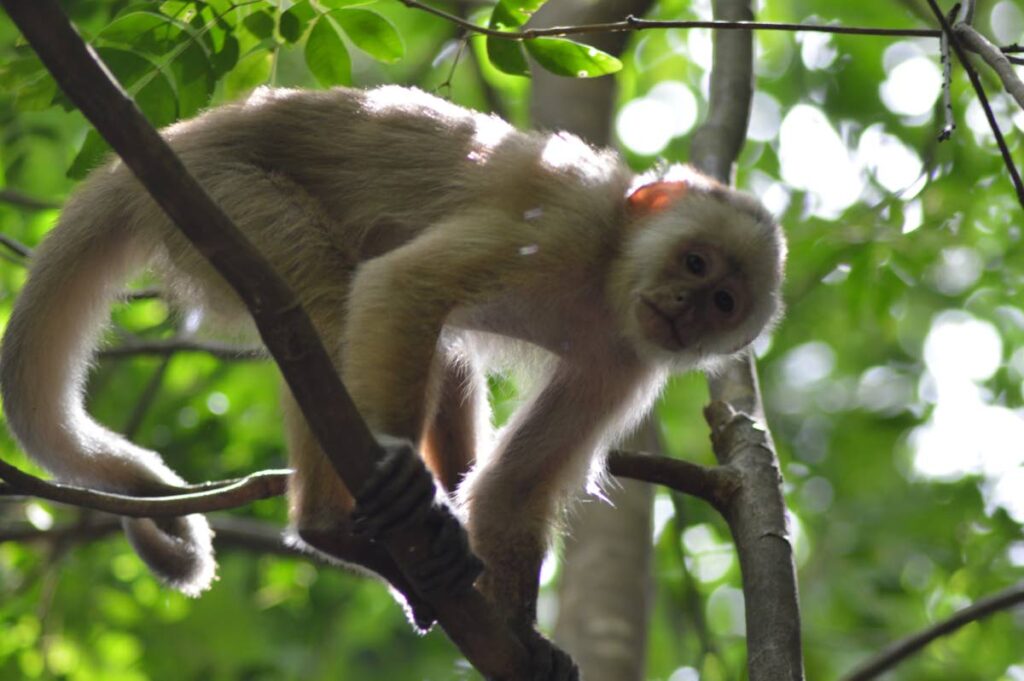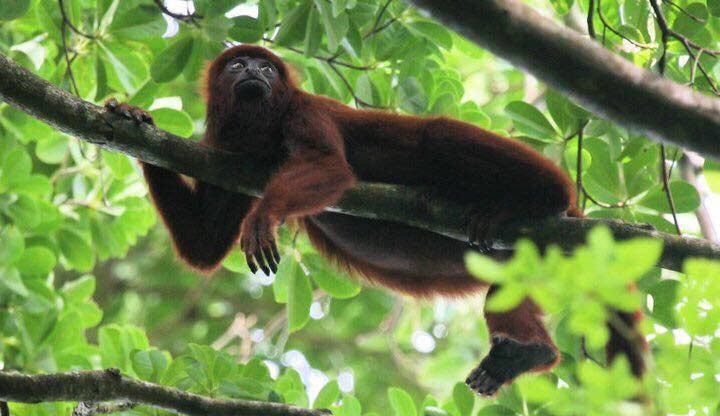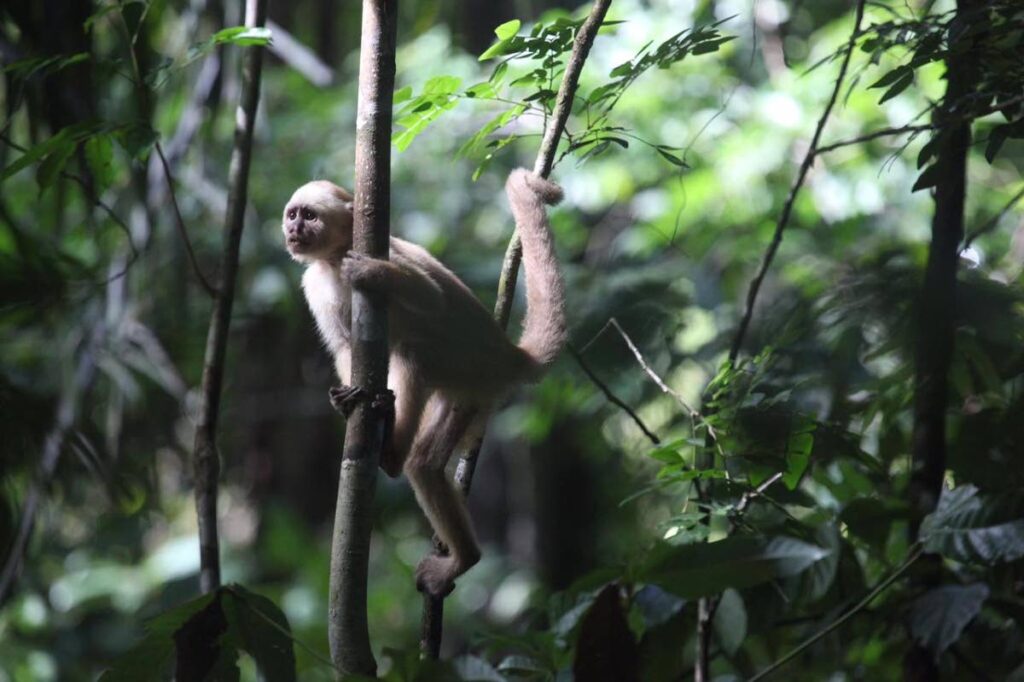Conservationists bid to protect Trinidad white-fronted capuchin, red howler monkeys

Monkeys such as the white-fronted capuchin and red howler are among the first lines of defence when devastating diseases enter the country.
In early 2020, hunters found the bodies of several red howler monkeys in the forests of south Trinidad and veterinarians later determined they died from yellow fever.
They also are among the first to be infected by dengue and malaria and can guide health authorities to take proactive measures to stop the spread of the diseases.
Game wardens, nature tour operators and wildlife conservations all welcomed the decision of the government to categorise the Trinidad Capuchin monkey and the Trinidad Howler monkey as environmentally sensitive species.
The Environmental Management Authority began receiving comments on the proposed change law on January 10 and will close off on February 18.
Conservationist Ricardo Meade of the El Socorro Centre for Wildlife Conservation said the decision to categorise the white-fronted capuchin and the red howler monkeys, both native species to TT, was “long overdue.”
He said it was difficult to determine the population of the two species as there is “poor data collection” to give baseline numbers to compare.
Meade said the species were under threat mainly by the loss of forests for development and now the invasion of illegally smuggled monkeys which are often released in the wild and are multiplying at alarming rates.

He said three other types of capuchin monkeys – tufted, black cap and wedge cap – which are found in South America are pushing out the white-fronted capuchin for territory and posing a major problem, particularly in the Chaguaramas district.
Homeowners in Glencoe and Goodwood Park have reported sightings of the tufted capuchin which is more aggressive. Meade said it may be necessary to come up with “a programme of wildlife management” to deal with the population growth of the invasive species before it is too late. He said squirrel and spider monkeys, also from South America, are also being smuggled into the country.
He said the native species of monkey are important to TT’s eco-tourism and areas in Chatham where the red howler was frequently seen and heard are now silent as forests are cleared for houses and other development.
Conservator of Forests and Chief Game Warden Denny Dipchandsingh said the forestry division had limited data on the population of howler monkeys over the last decade.
He said illegal hunting and people capturing the monkey to keep as pets have contributed to their decline.
“The red howler population is also an indicator species for any malaria, dengue and yellow fever outbreak making them an important species to protect,” he said.
According to a 2021 report from the International Union for the Conservation of Nature, there are fewer than 50 white-fronted capuchin monkeys in our forests.

- Photo courtesy Stephen Broadbridge
There are small troops in the Trinity Hills Wildlife Sanctuary in South Trinidad and the Bush Bush Wildlife Sanctuary in the Nariva Swamp.
“The most recent sightings in the Bush Bush Area have been recorded by the members and staff of the Zoological Society of Trinidad and Tobago Emperor Valley Zoo. In January and February 2021, four troops with 10-17 animals each were seen in Bush Bush as well as two troops of 8–10 animals each seen in Bois Neuf Island of Bush Bush,” according to the report.
“The species’ population is highly restricted. There are likely less than 50 mature individuals left in the wild, split across two protected areas. It is unlikely to persist outside these two populations because of its habitat requirements.”
The report listed the subspecies as “critically endangered.”
While the red howler is not heading for extinction, the can be seen in the western peninsula, in Chaguaramas, Diego Martin, Matura and Charuma forests, in Biche. They can also be found in the Bush Bush Sanctuary, the Iros forest and Trinity Hills Sanctuary.
According to a separate report from the International Union for the Conservation of Nature, also dated 2021, the red howler’s habitat is being degraded and threatened with destruction by slash and burn farming, encroachment of human habitation, agricultural development, forest degradation, reduced feeding and foraging resources, and competition from introduced species (western peninsula).

- Photo courtesy Stephen Broadbridge
The organisation said disturbance from legal and illegal hunting activities, incidental off-take from subsistence hunting and for the pet trade, illegal wildlife trafficking, lack of policing, and natural disasters including disease (dengue, yellow fever viruses) and severe seasonal changes, also contribute to the decreasing numbers.
Nature tour operator Stephen Broadbridge, who is the current vice president of TT Tour Operators Association, said once the monkeys designated environmentally sensitive species anyone caught hunting them or having them as pets can face significant fines, up to $100,000, and that serves as a deterrent to some. He said there was insufficient enforcement to protect local wildlife and also agreed that foreign species which escape from their owners can dilute the “genetic integrity” of the local species.
Broadbridge said he had been lobbying the government for a “long time” to protect the monkeys as he and Lester Nanan had done with the national bird, the Scarlet Ibis.
One experienced game warden said the monkeys were “critically important” to our environment as they were among the first line of defence against diseases such as yellow fever, dengue and malaria.
He said the illegal pet trade also contributed to the decline in species as hunters had to kill the parents to catch a baby monkey.
The game warden warned that other reptiles such as the Burmese python and the albino python are also being smuggled into the country and if they are released in the wild by their owners TT could face a similar problem like the Everglades in Florida where the number of exotic snakes is growing rapidly.
Animals declared environmentally sensitive species in TT
Trinidad piping-guan (Pawi)
West Indian manatee
White-tailed saber-wing hummingbird
Golden Tree frog
Ocelot
Olive Ridley turtle
Hawksbill turtle
Green turtle
Loggerhead turtle
Leatherback turtle

Comments
"Conservationists bid to protect Trinidad white-fronted capuchin, red howler monkeys"